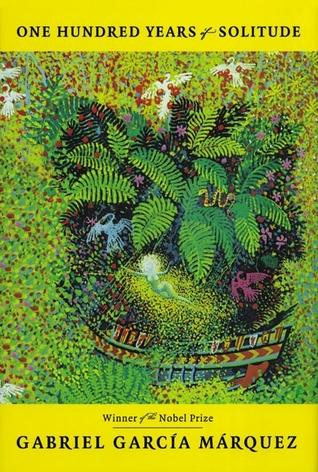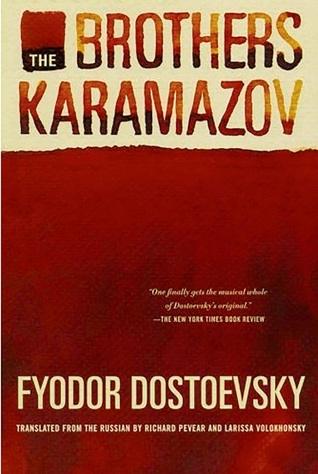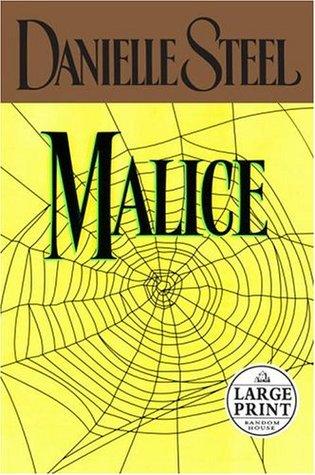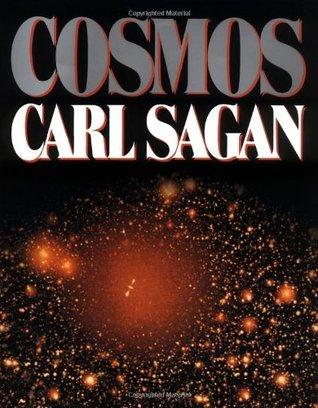One Hundred Years of Solitude by Gabriel García Márquez Book Summary
Discover a comprehensive summary of Gabriel García Márquez's "One Hundred Years of Solitude," exploring key insights and a detailed review. Unravel the magic realism, themes, and unforgettable characters that define this literary masterpiece. Perfect for fans and newcomers alike!
One Hundred Years of Solitude Book Summary
Gabriel García Márquez's masterpiece "One Hundred Years of Solitude" weaves the extraordinary saga of the Buendía family across seven generations in the fictional town of Macondo. This groundbreaking novel exemplifies magical realism at its finest, blending fantastical elements with profound social commentary about Latin American history and human nature. Through cyclical patterns of love, war, and solitude, Márquez creates an epic that explores themes of destiny, isolation, and the repetitive nature of history. The novel's rich symbolism and innovative narrative structure have cemented its place as one of literature's most influential works, offering readers a mesmerizing journey through time and imagination.
Discover the magic of Harry Potter and the Sorcerer's Stone Book Summary, Review & Key Insights to dive deeper into the enchanting story, key themes, and unforgettable characters that captivate readers worldwide.
One Hundred Years of Solitude by Gabriel García Márquez - Introduction
You know what totally blew my mind about One Hundred Years of Solitude? How it makes time feel like this fluid, almost magical thing—where past, present, and future aren’t separate but kind of swirl together. I didn’t expect a novel to make me rethink how I see history and memory, but here we are. I picked it up initially because I kept hearing it was this cornerstone of Magical Realism and Latin American Literature, and honestly, I wanted to see what all the fuss was about. Plus, it’s one of those books that’s both a Classic and a sprawling Historical Fiction saga, so I figured it’d be rich with layers.
If you’re someone who loves stories that mix the everyday with the fantastical, or if you’re curious about how a family’s saga can mirror the rise and fall of entire societies, this book is for you. It’s 417 pages, so it’s a bit of a commitment—expect to spend around 10-12 hours diving into Márquez’s world. But trust me, the way he weaves Literary Fiction with elements of Fantasy and deep cultural roots makes every page worth it.
Reading this felt like having a long, winding conversation with a friend who’s part poet, part historian, and part dreamer. If you enjoy novels that challenge how you think about reality and time, you’ll find yourself hooked. I really think you’ll come away seeing stories—and maybe even life—a little differently.
What is One Hundred Years of Solitude About?

"One Hundred Years of Solitude" by Gabriel García Márquez chronicles the multi-generational story of the Buendía family in the fictional town of Macondo, exploring themes of magic realism, solitude, and the cyclical nature of history. The book's main message highlights the inevitability of fate and the repetitive patterns in human behavior, suggesting that despite our efforts to break free, we often remain trapped in our own histories. Key concepts include the intertwining of reality and fantasy, the impact of solitude on human relationships, and the consequences of ignoring history.
About Book Author - Gabriel García Márquez
Tonight, we're joined by a storyteller whose words build worlds.
-
Gabriel García Márquez didn't start out as the chronicler of Macondo. His early life in Aracataca, Colombia, steeped in his grandparents' vivid tales—his grandmother telling the most fantastic stories with a completely straight face—laid the very foundation for the magical realism that would later define One Hundred Years of Solitude. This wasn't just a literary choice; it was the lens through which he saw the world.
-
What's interesting about Gabriel García Márquez, a detail I always found telling about his journey, is that when he and his wife Mercedes were finally ready to mail the manuscript for One Hundred Years of Solitude, they were so broke they could only afford to send half. They had to pawn her hairdryer and a few other essentials to send the rest. That kind of belief in your work, that sacrifice, it seeps into the pages.
-
His profound understanding of Latin American history, its myths, and its everyday realities, evident in works like Love in the Time of Cholera and Chronicle of a Death Foretold, wasn't learned from afar. He lived it, breathed it, and possessed an unparalleled ability to capture the extraordinary within the ordinary, making him uniquely qualified to give voice to the continent's soul.
More Books To Find
One Hundred Years of Solitude - Book Overview
It's essentially about the Buendía family over several generations in the fictional town of Macondo. The story explores themes of solitude, fate, and the cyclical nature of history. You see how their lives are intertwined with magical realism, where the extraordinary feels ordinary, which really makes you think about how we perceive reality.
Márquez wrote it to reflect the complexities of Latin American history and identity. It's not just a family saga; it's a commentary on how history repeats itself and how people are often trapped in their own patterns, much like the cycles of solitude that the characters experience.
What sets it apart from other books is its blend of magic and reality. While many novels tackle family dynamics or historical narratives, this one does so in a way that feels almost dreamlike. The way Márquez weaves the fantastical into everyday life makes you question what's possible.
One story that really stuck with me is the character of Remedios the Beauty. She ascends to heaven while folding a sheet, which is such a striking image. It encapsulates the surreal nature of the book and highlights how the ordinary and extraordinary coexist, leaving you pondering the boundaries of life, love, and destiny.
Key Insights of One Hundred Years of Solitude
Magical Realism: One Hundred Years of Solitude is a quintessential example of magical realism, blending the extraordinary with the mundane. This narrative style allows readers to explore complex themes through fantastical elements, enhancing the emotional depth of the story.
Family Legacy: The Buendía family’s cyclical history illustrates the impact of generational trauma and the inevitability of fate. Each generation repeats the mistakes of the previous one, highlighting the struggle against time and the weight of family legacy.
Isolation vs. Connection: The town of Macondo serves as a microcosm of the broader human experience, depicting the tension between isolation and the desire for connection. Characters often find themselves trapped in their own worlds, illustrating the profound loneliness that can accompany human existence.
Time and Memory: García Márquez plays with the concept of time, presenting it as non-linear and fluid. The narrative jumps back and forth, emphasizing how memories shape identity and how the past continually influences the present.
Political Commentary: The novel subtly critiques colonialism and the impact of political upheaval in Latin America. Through the rise and fall of Macondo, García Márquez reflects on the consequences of external forces on a society, ultimately showcasing the fragility of civilization.
Who Should Read This Book
"One Hundred Years of Solitude" by Gabriel García Márquez is a must-read for anyone interested in magical realism, Latin American culture, and the complexities of human relationships. Readers who appreciate rich, multi-generational narratives and themes of solitude, love, and history will find this novel captivating. It appeals to those who enjoy deep, thought-provoking literature that blends the fantastical with the mundane. Additionally, fans of intricate storytelling and symbolic writing will be drawn to Márquez's unique style, making it a valuable addition to the bookshelf of any literature enthusiast.
Read If You Are
- A fan of magical realism and rich, imaginative storytelling.
- Interested in exploring themes of family, history, and the cyclical nature of time.
- Seeking a profound literary experience that challenges conventional narrative structures.
Skip If You Are
- not interested in magical realism or surreal storytelling
- looking for a straightforward, linear narrative
- uncomfortable with complex family dynamics and historical themes
Important Takeaways from this Book
-
Embrace Solitude: Spend 10 minutes each day in complete silence and solitude. This practice helps you reconnect with your thoughts and feelings, fostering creativity and self-awareness. Consider finding a quiet space where you won’t be interrupted.
-
Cultivate Family Connections: Reach out to a family member you haven’t spoken to in a while. Share a memory or express appreciation. Strengthening these bonds can enhance your emotional support system. Ensure you choose a time when you can have an uninterrupted conversation.
-
Document Your Story: Start a journal and write about your day or significant life events for 5 minutes. This habit encourages reflection and can help you understand your personal narrative better, much like the Buendía family saga. Keep your journal handy to make it easy to write consistently.
-
Challenge Tradition: Identify one tradition you follow that no longer serves you and replace it with something new. This can lead to personal growth and a fresh perspective on your life. Reflect on what matters to you and be open to change.
-
Practice Forgiveness: Write a letter to someone you need to forgive (you don’t have to send it). This action can free you from past burdens and improve your mental health. Choose a quiet moment to reflect on your feelings before writing, ensuring you approach this with an open heart.
Book Review
One Hundred Years of Solitude was a book I had heard so much about, so I expected a profound exploration of family and history wrapped in magical realism. What I got was an intricate tapestry of the Buendía family saga, filled with rich imagery and unforgettable characters.
The strengths of this novel are undeniable. Márquez’s writing style is lyrical and immersive, pulling you into the fictional town of Macondo. For instance, the way he describes the arrival of the gypsies and the magical elements they bring is nothing short of enchanting. The characters, from the ambitious José Arcadio Buendía to the tragic Remedios the Beauty, are vividly drawn and linger in your mind long after you’ve closed the book.
However, I did find the pacing uneven at times. Certain sections felt dragged out, particularly in the latter half, which made it challenging to stay engaged. Additionally, the interconnectedness of the characters can be overwhelming, as it sometimes blurs the lines of who is who, making it easy to lose track of the story.
In comparison to other magical realism works like The House of the Spirits by Isabel Allende, I found Márquez’s narrative more complex but less accessible at times. While Allende’s characters felt more relatable, Márquez’s are steeped in myth, which can be both fascinating and frustrating.
Overall, I think One Hundred Years of Solitude is a must-read for those who appreciate deep, layered storytelling and don’t mind a bit of complexity. However, if you prefer straightforward narratives or are new to magical realism, you might find it a bit daunting.
Final Thoughts
If I'm being honest, One Hundred Years of Solitude was a wild ride that left me both amazed and a bit overwhelmed. The intricate web of the Buendía family and the magical realism woven throughout the narrative really drew me in, but the sheer number of characters and their interconnected fates can be a lot to digest. The thing that surprised me most was how the themes of solitude and cyclical history resonate so deeply, making you reflect on your own life and choices.
I'd definitely recommend this if you're a fan of magical realism or enjoy books that challenge your perception of time and reality. However, skip this one if you're looking for a straightforward plot or prefer fast-paced narratives. It’s definitely not for everyone, especially those who might get lost in the complexity.
One thing that will stick with me months from now is the haunting idea that history tends to repeat itself, especially within families. I would consider reading it again, but I think I'd recommend the full book over a summary to truly appreciate García Márquez's lyrical style and depth. Overall, my reading experience was enriching, albeit a bit perplexing, and I’m glad I dove into it.
Frequently Asked Questions
How long does it take to read One Hundred Years of Solitude?
The average reading time for "One Hundred Years of Solitude," which has 417 pages, is approximately 10 to 12 hours, depending on your reading speed. This translates to about 1.5 to 2 hours per day over a week for a more leisurely pace.
What makes "One Hundred Years of Solitude" different from other books in this genre?
One Hundred Years of Solitude stands out for its magical realism, blending the extraordinary with the mundane. García Márquez's rich, multi-generational storytelling and intricate character development create a unique narrative that explores themes of solitude, time, and history, setting it apart from other works in the genre.
Who is the target audience for One Hundred Years of Solitude
The target audience for "One Hundred Years of Solitude" includes readers interested in magical realism, Latin American literature, and complex family sagas. It appeals to those seeking rich narratives that explore themes of solitude, history, and cultural identity, resonating with both casual readers and literary enthusiasts.
Are there any criticisms or limitations of One Hundred Years of Solitude
Some criticisms of "One Hundred Years of Solitude" include its complex narrative structure, which can be challenging for readers, and the portrayal of female characters, which some find lacking depth. Additionally, the magical realism may not resonate with all audiences, leading to mixed interpretations of its themes.
What is the main theme of One Hundred Years of Solitude by Gabriel García Márquez
The main theme of "One Hundred Years of Solitude" is the cyclical nature of history and the inevitability of fate. It explores the complexities of solitude, family, and the impact of time on human experiences, illustrating how personal and collective histories intertwine in the town of Macondo.
Tags:
Gabriel García Márquez, One Hundred Years of Solitude, One Hundred Years of Solitude Author, One Hundred Years of Solitude Book, One Hundred Years of Solitude Book Description, One Hundred Years of Solitude Book Rating, One Hundred Years of Solitude Book Review, One Hundred Years of Solitude by Gabriel García Márquez, One Hundred Years of Solitude ISBN, One Hundred Years of Solitude Short Summary

Michel Fisher
Michel Fisher is a passionate fiction enthusiast and book blogger who writes about emotional reads, character-driven stories, and contemporary romance authors that captivate hearts and minds.

One Hundred Years of Solitude
Book Overview
Description
The brilliant, bestselling, landmark novel that tells the story of the Buendia family, and chronicles the irreconcilable conflict between the desire for solitude and the need for love—in rich, imaginative prose that has come to define an entire genre known as "magical realism."
Key Points
Magical realism defines narrative style
Characters
Úrsula Iguarán, Remedios Moscote, Remedios, la bella, Fernanda del Carpio, Aureliano Buendía, José Arcadio Buendía, Amaranta Buendía, Amaranta Úrsula Buendía, Aureliano Babilonia, José Arcadio Segundo, Aureliano Segundo, Aureliano José, Pilar Ternera, Rebeca Buendía, Santa Sofía de la Piedad, Arcadio Buendía, José Arcadio Buendía, hijo, Meme Buendía, Petra Cotes, Pietro Crespi, Melquiades
Publisher
Harper
First Publish Date
10/28/67
Awards
Premio Internacional de Novela Rómulo Gallegos (1972), Prix du Meilleur Livre Étranger for Roman (1969)





